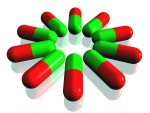
Annual progression rates in rheumatoid arthritis halved since 1990
 Researchers at the University of Hertfordshire have examined annual progression rates reported in long-term studies of rheumatoid arthritis published between 1965 and 2014 and found that the annual progression rates reported after 1990 were less than half those reported in the prior 25 years.
Researchers at the University of Hertfordshire have examined annual progression rates reported in long-term studies of rheumatoid arthritis published between 1965 and 2014 and found that the annual progression rates reported after 1990 were less than half those reported in the prior 25 years.
The findings, published online in Rheumatology, suggest that the natural history of rheumatoid arthritis has changed considerably since 1990, in light of advances in treatment, such as the use of biologicals and the more aggressive “treat to target” clinical approaches.
The researcher’s systematic review and analysis of long-term cohorts included 28 studies of long-term radiographic progression and 41 studies of predictors of progression. The baseline radiographic scores were similar in patients recruited pre- and post-1990. At baseline the radiographic score was 2.02% maximum damage for all trials. However, the annual rate for progression of radiographic joint damage scores was 0.68% in the post-1990 trial participants versus 1.50% in the pre-1990 participants.
The study authors suggest that the differences between the two recruitment periods coincide with changes in clinical management, particularly more intensive uses of methotrexate as an anchor disease-modifying drug. However, they acknowledge that the direct effect of different treatments has not been assessed but write, “Nevertheless, it is likely patients received standard contemporary care based on published guidelines about treatment regimens from the time they were being studied.”
For more in-depth features, interviews and information, subscribe to Arthritis Digest magazine, a popular title that’s published six times a year. Click here for the digital version or tel 0845 643 8470 to order your had copy. You’ll know what your doctor is talking about, what new drugs are in the pipeline and be up to date on helpful products.
